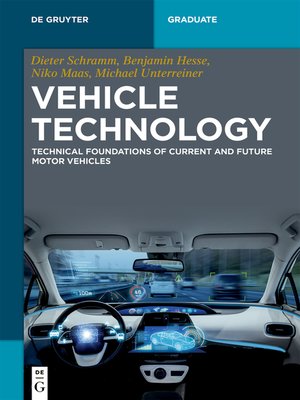Vehicle Technology
ebook ∣ Technical foundations of current and future motor vehicles · De Gruyter Textbook
By Dieter Schramm

Sign up to save your library
With an OverDrive account, you can save your favorite libraries for at-a-glance information about availability. Find out more about OverDrive accounts.
Find this title in Libby, the library reading app by OverDrive.



Search for a digital library with this title
Title found at these libraries:
| Library Name | Distance |
|---|---|
| Loading... |
The motor vehicle technology covered in this book has become in the more than 125 years of its history in many aspects an extremely complex and, in many areas of engineering science .
Motor vehicles must remain functional under harsh environmental conditions and extreme continuous loads and must also be reliably brought into a safe state even in the event of a failure by a few trained operators.
The automobile is at the same time a mass product, which must be produced in millions of pieces and at extremely low cost. In addition to the fundamentals of current vehicle systems, the book also provides an overview of future developments such as, for example, in the areas of electromobility, alternative drives and driver assistance systems. The basis for the book is a series of lectures on automotive engineering, which has been offered by the first-named author at the University of Duisburg-Essen for many years.
Starting from classical systems in the automobile, the reader is given a systemic view of modern motor vehicles. In addition to the pure basic function, the modeling of individual (sub-) systems is also discussed. This gives the reader a deep understanding of the underlying principles. In addition, the book with the given models provides a basis for the practical application in the area of simulation technology and thus achieves a clear added value against books, which merely explain the function of a system without entering into the modeling.
On the basis of today's vehicle systems we will continue to look at current and future systems. In addition to the state-of-the-art, the reader is thus taught which topics are currently dominant in research and which developments can be expected for the future. In particular, a large number of practical examples are provided directly from the vehicle industry. Especially for students of vehicle-oriented study courses and lectures, the book thus enables an optimal preparation for possible future fields of activity.







